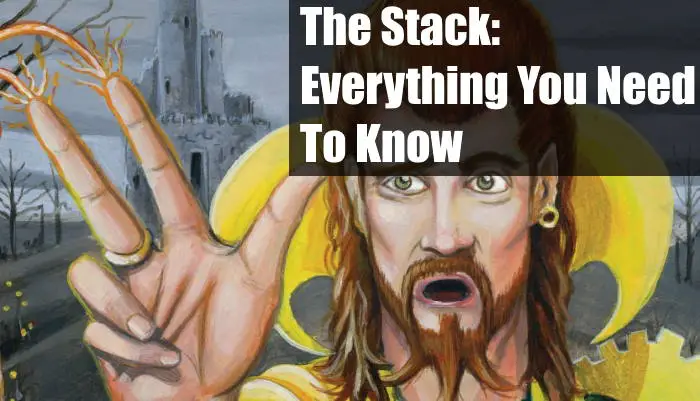The stack in Magic the Gathering has a reputation for being a confusing part of the game for many players. The stack has this reputation because players are hesitant to learn and teach others. That will end today because the stack is as easy as pancakes.
How Does The Stack Work?
The stack is the layering of spells and abilities that determines which spell resolves and in what order. Both activated and triggered abilities also use the stack. Before a spell/ability can resolve, another player with priority can choose to interact with their own spell/ability which will add to the stack. Instants and sorceries are not the only spells in magic. They also include creatures, planeswalkers, enchantments, and artifacts.
Priority refers to the right to cast a spell or activate an ability. It starts with the player whose turn it is. It’s passed when the active player is done adding spells to the stack or switching phases. To better visualize, imagine a stack of pancakes with each pancake representing a spell being cast or ability being activated/triggered.
As players respond they add another pancake on top. When players are done it’s time to feast. By consuming the pancake on top the stack begins to resolve from top to bottom. That first spell or ability that was put on the stack would resolve last. Let’s take a look at a simple scenario to start.
Scenario 1:
During Timmy’s main phase, he has priority.
Timmy: Casts Bile Urchin. Johnny gets priority since they cast no other spells.
Johnny: In response casts Opt. He passes priority back to Timmy who takes no action.
Result: Opt resolves first allowing Johnny to Scry 1 and draw a card. Then Bile Urchin comes into play.
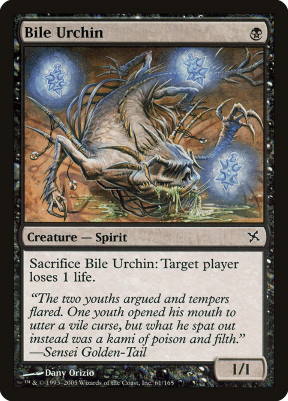
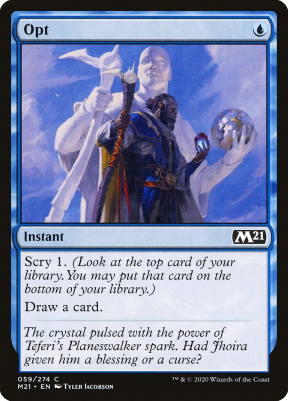
Nice and simple with only 2 spells on the stack. The stack does not resolve at one time. Each resolution allows another opportunity to add to the stack. Let’s introduce adding to the stack in between spells resolving and activated abilities.
Scenario 2:
Timmy: Casts Bile Urchin. Jonny gets priority since no other spells were cast.
Johnny: In response casts Opt. Johnny passes priority back to Timmy who takes no action.
Opt resolves first allowing Johnny to Scry 1 and draw a card. Johnny has drawn a Lightning Bolt. Would Johnny be able to cast Lightning Bolt? Yes, Johnny has an opportunity to cast Lightning Bolt.
However, they could not cast it targeting Bile Urchin. It’s still on the stack and not on the battlefield. For this scenario let’s have Johnny hold onto their Lightning Bolt.
Johnny passes priority and Bile Urchin resolves. Timmy has priority as they are the active player. He can cast another spell or activate ability.
Timmy: Decides to move to their combat phase. Switching phases passed priority. Before moving to the combat phase Johnny gains priority.
Johnny: Casts Lightning Bolt targeting Bile Urchin.
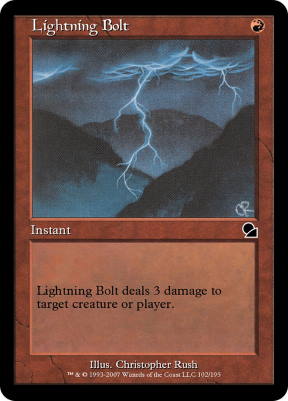
Timmy: Responds by activating Bile Urchin’s ability targeting Johnny. The cost to activate is sacrificing itself. Johnny does not have a response to the activated ability, so the stack begins to resolve.
Result: Bile Urchin’s ability causes Johnny to lose 1 life, Lightning Bolt fizzles since its target no longer exists.
Fizzle is a common term amongst magic players referring to when a spell or ability fails to resolve. As a result of all its targets being missing or illegal when it resolves. The stack is ever present in Magic even though most players are not aware of the mechanics.
RELATED: 5 Common Commander Deck Building Mistakes
What Uses The Stack And What Does Not?
The stack is the zone where spells, activated abilities, and triggered abilities wait to resolve.
Spells: all nonland cards in magic are spells, so they all use the stack when cast
Activated abilities: an ability that has a cost that will contain a colon (:) ex. Bile Urchin’s ability
Triggered abilities: an ability that occurs when something occurs ex. Glorious Sunrise’s ability
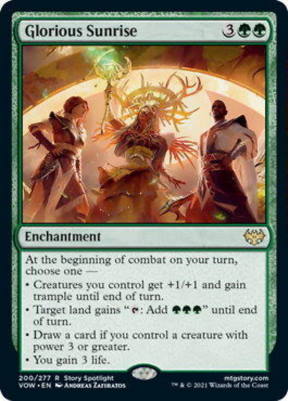
Lands when played do not inherently use the stack. Priority is not passed this way. Opponents cannot interact with a land drop or land-producing mana by tapping. Mana abilities even from non-land sources resolve instantly, so players cannot respond to them.
Some lands do contain triggered or activated abilities that do use the stack. Examples: Blighted Gorge and Bojuka Bog.
How Do Counter Spells Work On The Stack?
Well counterspells would not exist if there was not a stack in magic since counters only interact with cards or abilities on the stack. The spell will no longer exist in the stack once the successful counterspell resolves.
701.5a To counter a spell or ability means to cancel it, removing it from the stack. It doesn’t resolve and none of its effects occur. A countered spell is put into its owner’s graveyard
MagicJudges.org
Scenario 3:
Timmy: Casts Lightning Bolt
Johnny: Casts Counterspell targeting Lightning Bolt
Result: Counterspell is above Lightning Bolt on the stack. Lightning Bolt will stay on the stack until Counterspell resolves. If no other action occurs Counterspell resolves removing Lightning Bolt from the stack and ending the stack. Similar to before, let’s step it up to show a scenario often referred to as a counter-war with a storm card.
Scenario 4
Timmy: Casts Lightning Bolt
Johnny: Casts Counterspell targeting Lightning Bolt
Timmy: Casts Swan Song targeting Counterspell with no mana remaining.
Johnny: Casts Flusterstorm that creates 3 copies of itself due to Storm that are all targeting the original Lightning Bolt. ( Johnny benefits from the opponent’s Swan Song by getting a creature, so they decided to target the original spell Lightning Bolt)
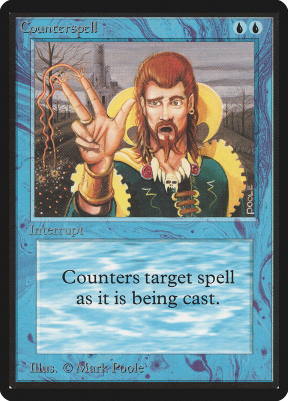
Result: Flusterstorm has created 4 abilities on the stack which Timmy would have to pay for each one since they cannot. The first instance of Flusterstorm counters Lightning Bolt removing it from the stack. Three copies of Flusterstorm fizzle since their target has been removed. Finally, the Swan Song counters the Counterspell and Johnny receives a 2/2 flying bird ending the stack.
There are cards that not only counter spells (creature, artifact, sorcery etc.), they are able to counter-activated and triggered abilities such as Stifle. Stack priority often shifts between spells. However, there is another option for the active player to open up new lines.
Related: The Best Counterspells In MTG
How Does A Player Hold Priority?
When the active player declares they are holding priority to put multiple spells or abilities on the stack. They do this before passing priority to an opponent to interact with those spells or abilities. Holding priority only allows for instant speed spells and abilities to be added to the stack.
A player is not allowed to hold priority to continually cast creatures unless they have flash or it’s done at instant speed. This does not mean holding priority allows spells to be immune to interaction! It simply means the active player puts down multiple pancakes in a row before allowing the opponent to add theirs. There are a few reasons why players want to hold priority.
Alrund’s Epiphany paired with Galvanic Iteration was a staple in the Standard meta in 2020. Copying big spells is powerful. Copying cards like Reverberate are stronger when a player knows how to make use of holding priority. In MTGO or MTG Arena players must select that they are holding priority in full control mode. For playing in person, the active player must state that they are holding priority as they cast their first spell/activate an ability.
For the pairing above the player would cast Alrund’s Epiphany while holding priority. They then cast Reverberate. Both spells are put on the stack with Reverberate creating a copy of Alrund’s Epiphany. Holding priority does not only work copying spells, but also changing
Scenario 5:
Timmy: Has a Mangara of Corondor in play and activates its ability holding priority targeting Autochthon Wurm. Timmy also has a Karakas which is activated targeting Mangara of Corondor in response.
Johnny: Gains priority, but has no interaction with it.
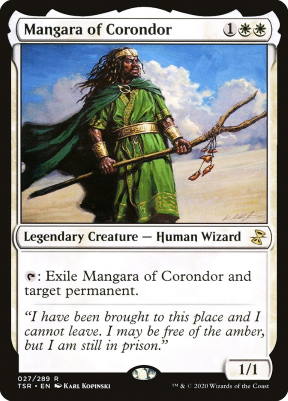
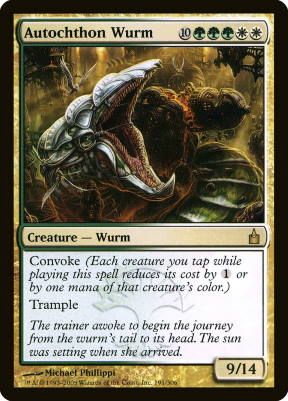
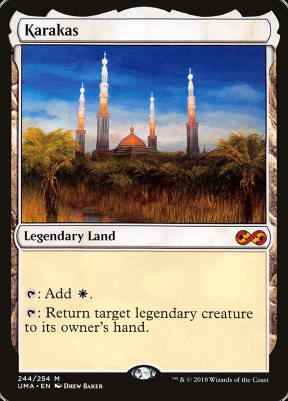
Result: Karakas’s ability resolves first bouncing Mangara of Corondor to Timmy’s hand. Then Mangara of Corondor’s ability resolves exiling the Autochthon Wurm. Due to its effect, there is no Mangara of Corondor to be exiled. Activated abilities are represented with a colon (:) that determines the cost and the effect that is put on the stack.
(left is the cost to activate) : (right is the effect that gets put onto the stack)
I End The Stack With This
There are so many ways to interact with the stack. Simply stack spells like pancakes and go through each resolution one by one. I hope this has helped players of all levels see the stack clearer and inspired more creative gameplay.
